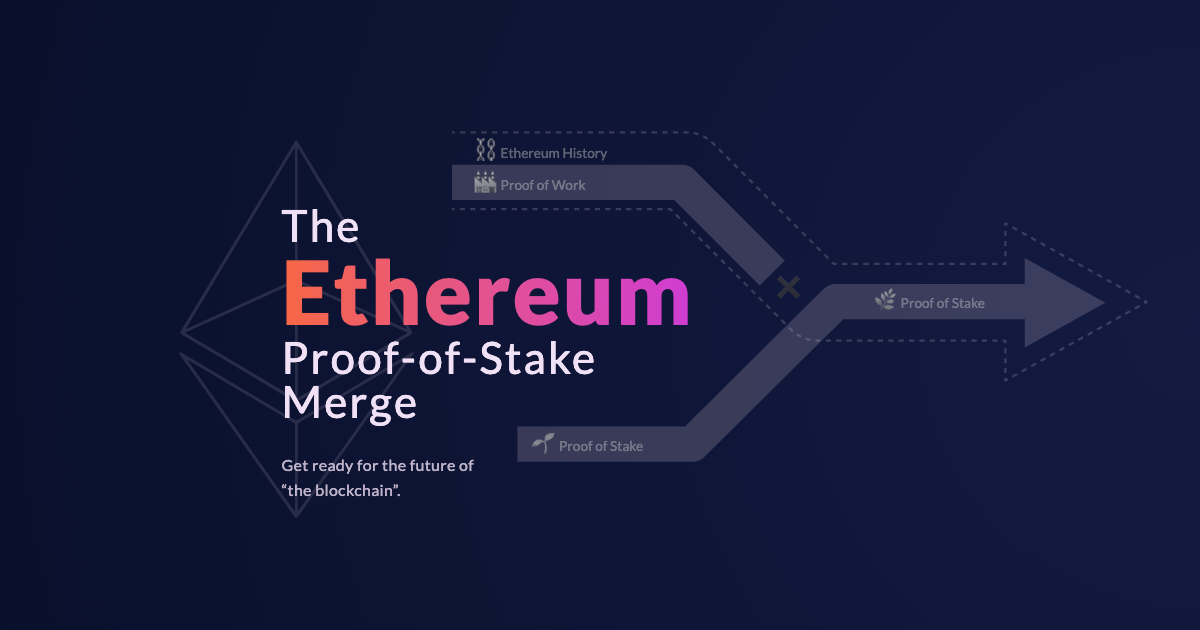The long-promised switch finally happened – on September 15, the Ethereum network changed its consensus mechanism for Proof-of-Stake. Some already called it a historical moment that spelled the end of the mass video cards mining era, others portend the dawn of energy-efficient mining – so let us see why.
What happened?
- On Sept. 15, at around 3 a.m. Eastern time, the Ethereum team completed the switch of Ethereum from Proof-of-Work (PoW) to a more sustainable system, Proof-of-Stake (PoS) in their milestone update called “the Merge”.
- “The Merge represents the joining of the existing execution layer of Ethereum (the Mainnet we use today) with its new proof-of-stake consensus layer, the Beacon Chain”, the Ethereum Foundation commented.
- Around a month before, on August 10, 2022, Ethereum successfully passed the Goerli public testnet merge – the last trial before proceeding on Mainnet.
- The transition had been long in making: it took six years for the developers to plan and eventually accomplish the merge. The Ethereum developers compared the transition process to preparing a starship for an interstellar voyage: “The community has built a new engine and a hardened hull. After significant testing, it’s almost time to hot-swap the new engine for the old mid-flight. This will merge the new, more efficient engine into the existing ship.”
Proof-of-Work Vs. Proof-of-Stake
- Ethereum has been the second biggest cryptocurrency by market cap and the most preferred one for GPU mining. Along with Bitcoin, it used to have a proof-of-work mechanism at its core.
- Proof-of-work protocol is one of the ways of securing the network to process new transactions. For the transaction to be valid, each member of a network has to expend a certain computational effort on performing calculations with their miner. Hence Proof-of-Work thus depends on the computer’s GPU and is considered extremely power-hungry, with its amounts of electricity consumption being comparable to those of entire countries.
- Given the longstanding concerns about the scale of Bitcoin’s electricity consumption and its footprint, the solution was to shift to the Proof-of-Stake – another type of consensus mechanism, which involves validators instead of miners to complete the transactions.
- Developed as a faster and less and less resource-intensive alternative to Proof-of-Work, Proof-of-stake requires each network member to stake their own crypto in exchange for the validation of a new transaction. Anyone owing 32 ETH becomes available to pledge to the network and activate own validator to vote on the next block, yet it is possible to stake less than this amount. It’s thus the size of the stake that defines the weight of the vote in the PoS mechanism.
- Switching to the Proof-of-Stake would yield a substantial improvement to the network due to less consumption of electricity, reduced centralization risks, security against 51% of various types of attacks, and so on. The Ethereum Foundation commented on the decision: “It eliminates the need for energy-intensive mining and instead secures the network using staked ETH. A truly exciting step in realizing the Ethereum vision – more scalability, security, and sustainability”.
What will it (not) change?
- Reducing the transaction costs, curtailing the network’s carbon footprint by ditching energy-intensive mining, and paving the way for greater network scalability – the developers apparently pursue big goals and make ambitious claims. One of them is “to make the network 99.95% more energy-efficient compared to PoW”. So far, the introduction of Proof of Stake allowed for a drop in global electricity consumption of 0.2%. Such an eco-friendly turn proves to be forward-thinking and is expected to attract even more institutional investors later on.
- However, contrary to popular beliefs, faster transactions are not the thing to expect from the switch, and the users will hardly notice any difference in its speed. According to the Ethereum Foundation, the merge is a “change of consensus mechanism”, and not “an expansion of network capacity”.
- The same can be assumed regarding the network’s high gas fees. That said, the upcoming developments of the Ethereum infrastructure and upgraded scaling solutions may ultimately contribute to the network fee decrease in the future.
- With Ethereum switched to proof-of-stake, GPU miners are no longer able to mine Ethereum on their computers and are thereby forced to seek other mineable altcoins, among which are the potential contenders for the “best after Ethereum” – Ergo and Ravencoin. Is any of them ever going to be as popular as Ethereum? – let’s leave things down to chance and market forces.

